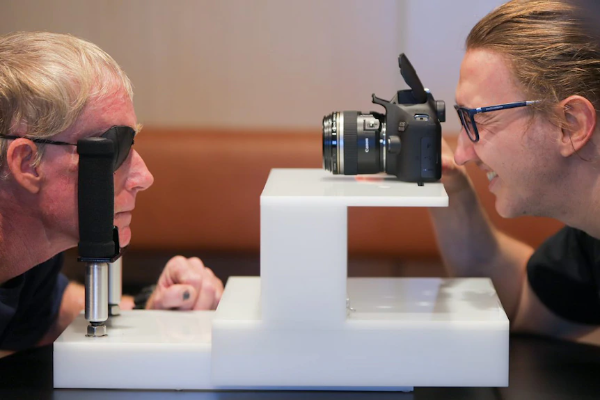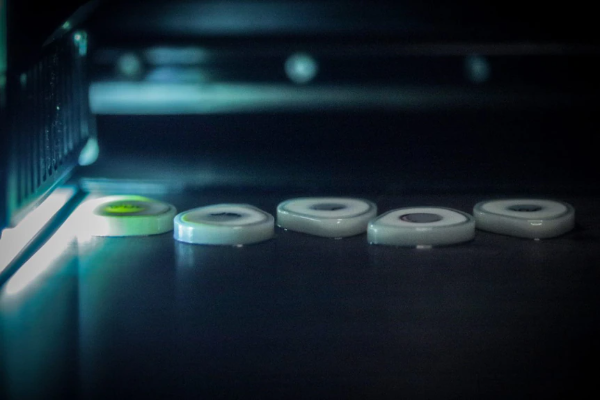RBWH Nicholas Puls and HBI’s Dr James Novak and Danilo Carluccio utilising 3D printing technology to create prosthetic eyes
Each year the Royal Brisbane and Women’s Hospital (RBWH) cares for about 10 patients who need a full orbital prosthesis, which consists of a silicone eye socket and an artificial eye that sits in it. About 100 patients a year need an ocular prosthesis, or artificial eye, which fits into the individual’s existing socket.
Occularist, Nicholas Puls has been completing the time-consuming process that requires specialist modelling and painting skills. pairing up with HBI’s Dr James Novak and Dr Danilo Carluccio the team uses 3D scanning and high-resolution photographs to produce the artificial eyes.
“By digitising part of this process, we can take a photograph of the patient’s existing eye, mirror it to the other side and perfectly replicate that. Traditionally that has to be done by hand and obviously there’s room for error, and the skill of the ocularist obviously plays a big part in the accuracy of that eye.”
“Once we’ve digitised and created the patient’s first eye, we can 3D print them as often as necessary and simply post them out to the patient if they’ve lost the eye or damaged it or simply need back-ups,” Dr Novak said.
Senior research fellow Dr James Novak is running an evaluation trial, with 10 patients, to assess how the look and feel of 3D printed eyes compares with handmade ones. “The RBWH Foundation has been fantastic in supporting this small study, but in order to do a much larger cohort study, raising some funding would allow us to implement that on a larger scale.”

Dr Danilo Carluccio takes photo of patient’s eye to use with scans to produce a matching prosthesis.

3D printing patient matched prosthetic eyes.
